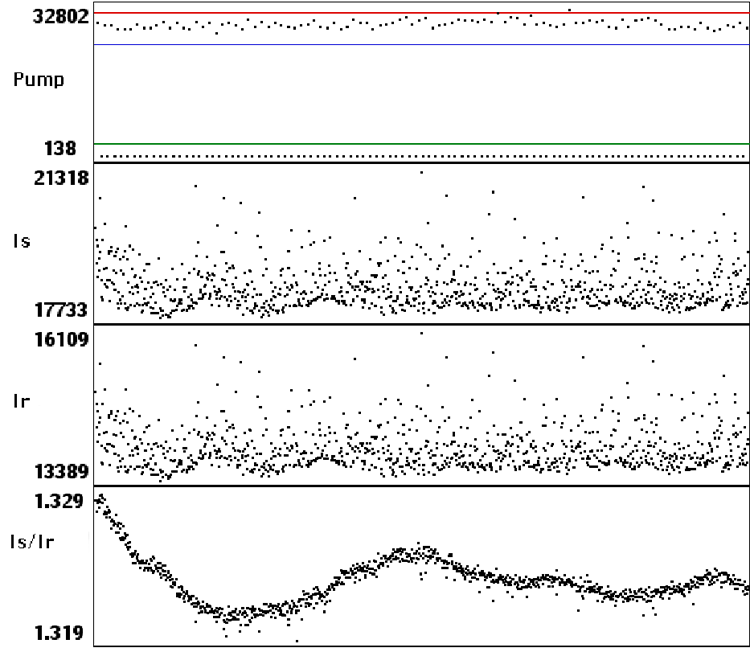Correction of probe light noise in absorption measurements.
For a double beam set-up, the ∆absorption is: (∆abs) = log((Ios/Ior)/(Is/Ir), where Is,Ir and Ios,Ior are the light intensities (I) of the sample (s) and reference (r) beams in absence (o) and presence of the pump pulse, respectively. By measuring Ir, the pulse-to-pulse fluctuations of the probe light intensity (Is) can be corrected for. This is important because these fluctuations are in the range of 1 to 10%. The measurements of Ios and Ior, without the pump pulse, makes it possible to zero the ∆abs. The most convenient way would be to measure Ios/Ior once and use it for all the subsequent Is/Ir measurements. However, even if Is and Ir follow each other very well, their ratio is not constant, but fluctuates with time (see fig).
These fluctuations in Is/Ir occur on many time scales and also at lower frequencies than what is shown in figure. They are caused by instabilities in the laser and to some extent in the detection electronics. As can be seen in figure, the Is/Ir ratios are more similar when adjacent laser pulses are compared, but vary considerably over larger time intervals. This implies that Ios/Ior can not be determined once and for all, but has to be determined once for every Is/Ir pair. To accomplish this, the pump beam is chopped in order to block every second pulse. The collection computer then processes the data in Ios/Ior and Is/Ir pairs measured directly after each other. This puts high demands on the readout system of the diode array, since its collected data must be completely read out and processed between subsequent laser shots.

The intensities of 1000 consecutive laser pulses (200 in case of the pump, so that the chopping is clearly seen). The coloured lines are gate levels.
|



